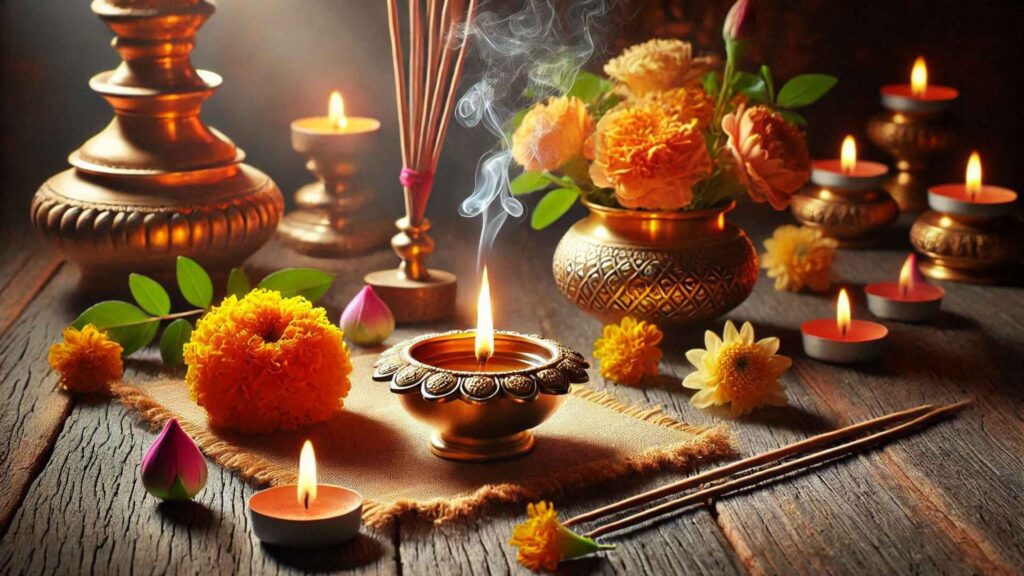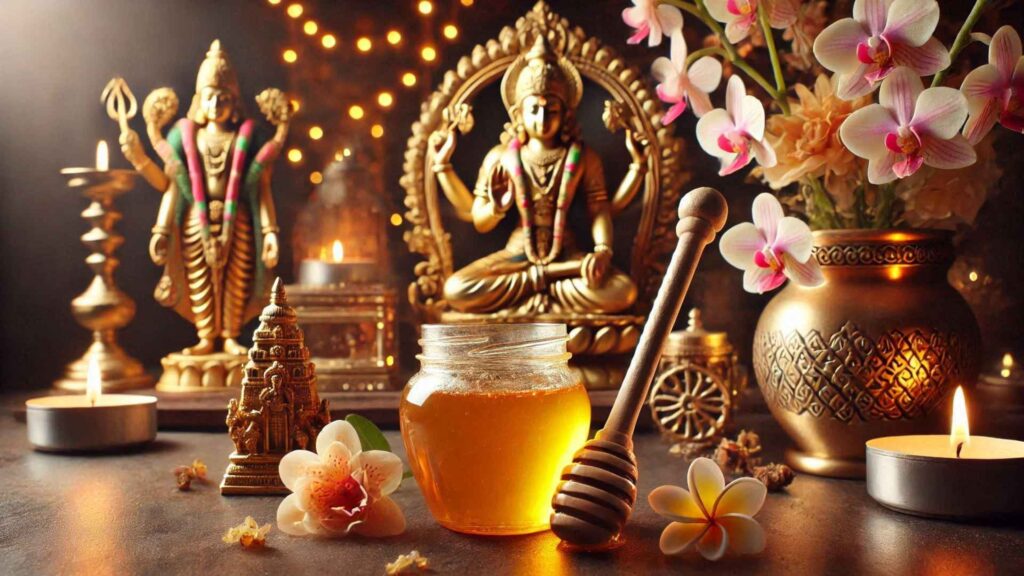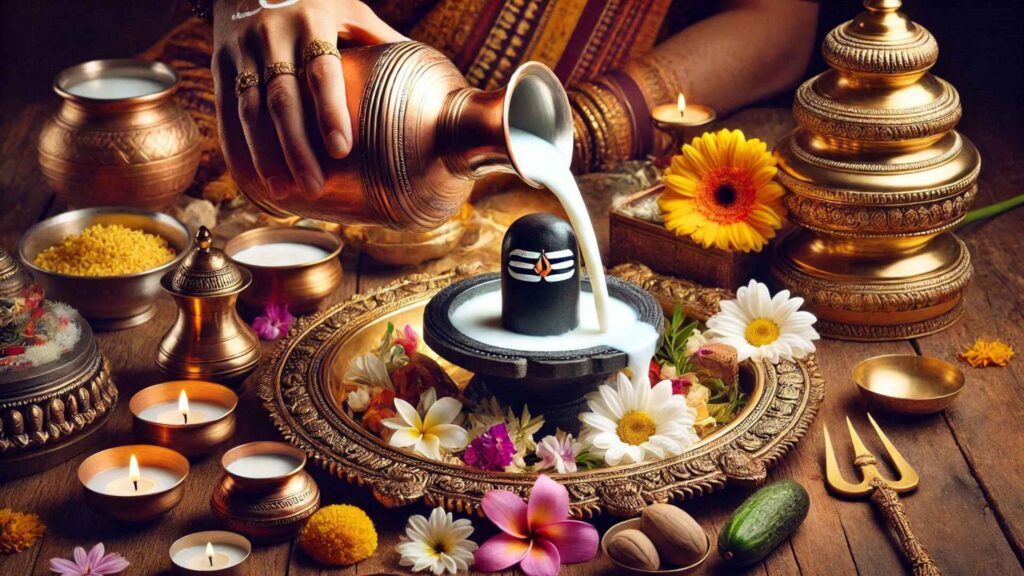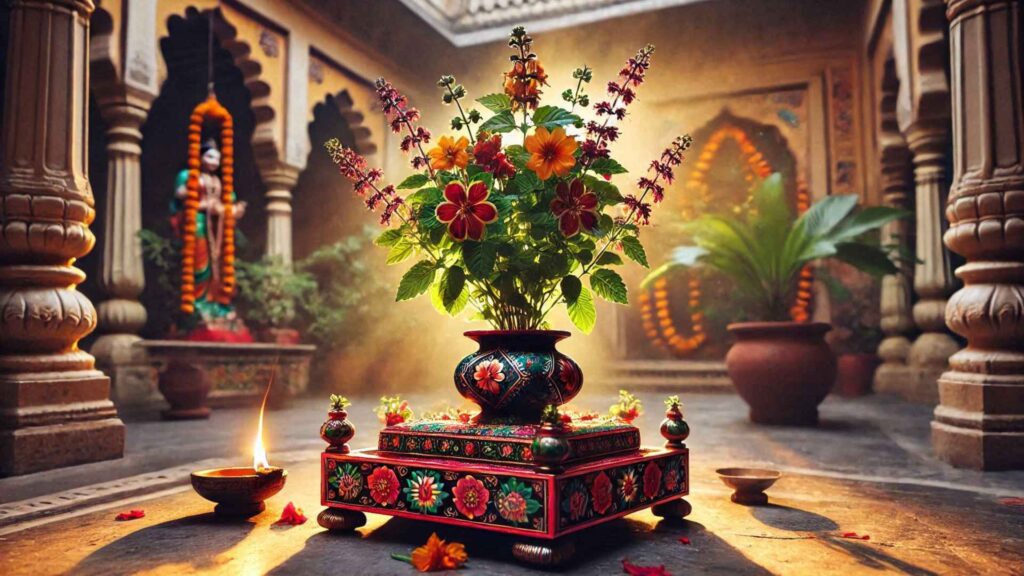Religious Importance of Sacred Elements in Hinduism: Ghee, Honey, Milk, Tulsi, and Gangajal
The Concept of Sacredness in Hinduism
Hinduism, with its profound connection to nature, reveres certain elements as sacred for their divine association and symbolic meaning. Ghee, honey, milk, tulsi leaves, and sacred water (Gangajal) are not just physical substances; they are spiritual conduits used in rituals, prayers, and ceremonies.
Read More About sacred texts
Hook Statement
Imagine lighting a ghee lamp that represents eternal hope, offering honey as a symbol of life’s sweetness, or using Gangajal to purify your spirit. These elements are the very essence of Hindu devotion.
Overview of Sacred Elements
These elements are valued for their purity, nourishment, and divine properties. They hold significant roles in yajnas (fire rituals), pujas (worship ceremonies), and abhishekam (ritual bathing of deities). Deeply rooted in Hindu philosophy and texts, they symbolize cosmic order and spiritual harmony.
Modern Relevance
In today’s world, these sacred elements continue to inspire spirituality while also promoting sustainable and holistic practices. They bridge ancient traditions with contemporary mindfulness, offering timeless wisdom.
2. Historical Background: Origins of Sacred Elements
Ghee

Ghee, or clarified butter, has been venerated since Vedic times. The Rigveda describes it as a sacred offering in yajnas, linking it to Agni, the fire god. Mythologically, ghee is believed to have emerged from the Samudra Manthan (cosmic churning), symbolizing purity and nourishment.
Honey

Honey, known as Madhu, appears in the Atharvaveda as a symbol of health and prosperity. Its connection to sweetness and fertility made it a vital offering in ancient rituals. Honey’s role evolved over time, becoming a key component in panchamrit, the sacred mixture offered to deities.
Milk and Dairy Products

Milk has been revered as a universal sustainer, often associated with the divine cow Kamadhenu. The Bhagavata Purana extols its significance in the life of Lord Krishna, who is celebrated for his playful association with butter. Dairy products became central to rituals, representing abundance and purity.
Tulsi Leaves

Tulsi, or holy basil, is considered the earthly manifestation of Goddess Lakshmi. The Padma Purana and Skanda Purana highlight its sanctity, particularly in Vishnu worship. Tulsi plants have been nurtured in Hindu households for centuries, symbolizing devotion and purity.
Sacred Water (Gangajal)

The Ganga River, personified as the goddess Ganga, is believed to have descended from the heavens to purify humanity. Ancient texts like the Mahabharata and Ramayana document its spiritual significance, associating Gangajal with cleansing, liberation, and divine grace.
3. Spiritual Significance: The Divine Connection
Ghee
Ghee symbolizes purity, transformation, and the eternal light of the soul. Its role in yajnas signifies the offering of selfless devotion, bridging the earthly and the divine. The flame of a ghee lamp represents spiritual enlightenment.
Honey
Honey is a symbol of life’s sweetness and divine blessings. Its use in panchamrit signifies the union of earthly and celestial elements. It represents abundance, unity, and prosperity.
Milk and Dairy Products
Milk embodies nurturing and sustenance, representing the motherly aspect of the divine. Used in abhishekam, milk symbolizes purification and divine grace, fostering a connection between devotees and deities.
Tulsi Leaves
Tulsi leaves are indispensable in Hindu worship, particularly in offerings to Vishnu and Krishna. They symbolize devotion, purity, and spiritual resilience. Tulsi is also considered a purifier of the soul and a protector from negative energies.
Sacred Water (Gangajal)
Gangajal is the ultimate purifier, believed to wash away sins and promote spiritual liberation. Its presence in rituals symbolizes life’s cyclical nature, cleansing and renewal.
4. Practical Application: Sacred Elements in Daily Worship
Ghee
- Lighting Lamps: Diyas fueled by ghee are essential in daily prayers and festivals like Diwali, symbolizing spiritual illumination.
- Homas: Ghee is poured into sacrificial fires to invoke blessings and connect with cosmic forces.
Honey
- Panchamrit: Honey is a key ingredient in the sacred mixture offered to deities during rituals.
- Temple Offerings: Honey is used to anoint idols, symbolizing prosperity and sweetness.
Milk and Dairy Products
- Abhishekam: Deities are bathed with milk during special rituals, symbolizing purification.
- Prasad: Dairy-based sweets like butter and kheer are offered as blessings during religious ceremonies.
Tulsi Leaves
- Daily Worship: Tulsi leaves are placed on Vishnu idols and used in household pujas.
- Medicinal Use: Tulsi is also consumed as a sacred herb for its health benefits, integrating spirituality with wellness.
Sacred Water (Gangajal)
- Purification: Gangajal is sprinkled during rituals to cleanse spaces and individuals.
- Ceremonial Use: It is used in major life events like marriages, births, and funerals, symbolizing spiritual purity.
5. Cultural Impact: Influence of Sacred Elements
Ghee
Ghee’s significance extends to Hindu festivals, cuisine, and Ayurveda. It is central to Diwali, where diyas lit with ghee symbolize hope and renewal.
Honey
Honey is celebrated in Madhu Purnima, a festival honoring its role in both spiritual and practical life. Its presence in Ayurvedic medicine highlights its timeless relevance.
Milk and Dairy Products
Milk and butter are celebrated in Janmashtami, reflecting their importance in Krishna’s lore. These products also appear in Hindu art and literature, symbolizing abundance.
Tulsi Leaves
Tulsi’s cultural importance is celebrated during Tulsi Vivah, a festival marking the symbolic marriage of Tulsi to Vishnu. It is a lasting symbol of devotion and sanctity.
Sacred Water (Gangajal)
Gangajal is central to the Kumbh Mela, the largest spiritual gathering in the world. Its cultural significance transcends religion, inspiring art, literature, and social movements.
6. Conservation and Preservation
Challenges
- Overharvesting of Tulsi and unsustainable dairy farming.
- Pollution threatening the purity of Gangajal.
Preservation Efforts
- Promoting organic and sustainable farming for Tulsi and dairy production.
- Community initiatives like Namami Gange to clean and protect the Ganga River.
- Awareness campaigns advocating for the ethical use of natural resources.
Future Outlook
Sustainable practices and renewed reverence for these sacred elements are essential for their preservation, ensuring their availability for future generations.
7. Expert Insights
- Religious Scholars: “Sacred elements like ghee, honey, and Gangajal are vital links between the material and spiritual worlds, embodying purity and devotion.”
- Scientific Research: Studies validate the health benefits of honey, ghee, and Tulsi, aligning ancient practices with modern science.
- Modern Interpretations: Experts highlight the environmental and cultural relevance of these elements, emphasizing their role in sustainable spirituality.
8. Conclusion
The sacred elements of Hinduism—ghee, honey, milk, tulsi leaves, and Gangajal—are more than ritual objects. They symbolize purity, sustenance, and divine connection, forming the cornerstone of Hindu spirituality and culture.
How do you incorporate these sacred elements into your spiritual practices? Share your thoughts and explore more on Hinduvism.com.


